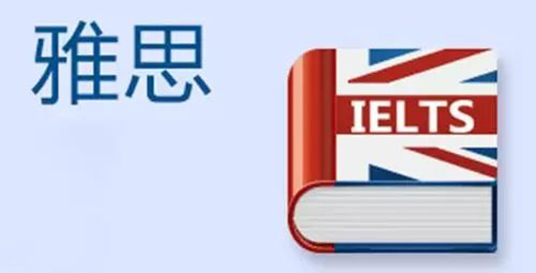发布时间:2021-05-26 关键词:雅思阅读速读八大技巧
摘要:为什么你的雅思阅读做题速度那么慢?题量大不是借口,新航道小编带你学会一目十行的阅读小技巧。时间紧、任务重,雅思阅读文章不用逐字逐句阅读,遇到这些提示信息,就跳过吧。
为什么你的雅思阅读做题速度那么慢?题量大不是借口,新航道小编带你学会一目十行的阅读小技巧。时间紧、任务重,雅思阅读文章不用逐字逐句阅读,遇到这些提示信息,就跳过吧。
很多考鸭把雅思阅读题作为自己提高雅思总分的稻草,然而,奈何文章太长,题量巨大,1个小时的时间根本不够,讲真,native speaker也未必做得到。事实上雅思阅读考试的目的不是让你通读全文,而是学会提取阅读文章中的关键信息。跟着新航道小编一起学习雅思阅读提分小技巧,学会一目十行的技能吧。
想要提高阅读速度,首先要知道文章中明显或者不明显的“逻辑信号”,它们在英语中又是如何表达的:
雅思阅读速读技巧1:因果关系,看果
在文章当中,“因为”引导的内容,往往是一段陈述或铺垫,“所以”引导的内容,才是结论和总结。所以速览时,我们可以暂且把“原因”的部分略过,先看“结果”的部分,从而减省把握文章重点的时间。
引出“原因”的常用表达:because, because of, as a result of, result of, due to, thanks to, owing to, since, for, grateful for等,如:
“Since employees have different needs, what acts as a reinforcement for one may not for another.”
(剑桥雅思真题6, Test 3, Reading Passage 2)
“Since”所在的前半句是原因,关键看后半句的结果(结论)。
引出“结果”的常用表达:so, therefore, hence, thus, result in, lead to, consequently, as a result等,如:
“Such findings suggest that one person’s equity is another’s inequity, so an ideal should probably weigh different inputs and outcomes according to employee group.”
(剑桥雅思真题6, Test 3, Reading Passage 2) :重点看“so”所在的后半句;
“Speech is often unclear and ambiguous. Where possible, therefore, the recording has to be supplemented by the observer’s written comments on the non-verbal behaviours of the participants, and about the context in general.”

(剑桥雅思真题4, Test 3, Reading Passage 3):重点看“therefore”所在的第二句。
雅思阅读速读技巧2:转折关系,看但是!
“让步”的内容再豪华,都敌不过一个“但是”。这个道理很显浅,就不多作解释了。而快速浏览文章时,我们就可以暂且只看“转折”部分的内容。反之,遇到“让步”的内容,我们则可暂时忽略不看。
(1)常见表“转折”的说法
常见表“转折”的说法还有:but,however,nevertheless,yet,nonetheless等,如:
“Down the centuries, thousands of wells were constructed throughout northwestern India, but the majority have now fallen into disuse…”
(剑桥雅思真题10, Test 1, Reading Passage 1) :无论前面说了什么,也改变不了“the majority (of wells)”被弃用的现实。重点显然在转折词“but”之后。
(2)引导“让步”的常用说法
引导“让步”的常用说法有:whereas,although,though,while,whereas,despite,in spite of,for all等,如:
“Where as most exercises are designed to build up strength or endurance, plyometrics focuses on increasing power – the rate at which an athlete can expend energy.”
(剑桥雅思真题4, Test 4, Reading Passage 1) “whereas”所在的半句为让步状语从句,重点看另一个半句(转折的内容)。
雅思阅读速读技巧3:递进关系,看后句
所谓递进,即前后保持一致意见的情况下,后者在态度和语气上更进一步。故,读懂后者,即可得知前者。速览文章时,重点先读递进后面的内容。
常见表达“递进”的说法有:furthermore,moreover,not only…but also…,in addition等,如:
“The psychiatrists felt that ‘most subjects would not go beyond 150 volts’ and they further anticipated that only four per cent would go up to 300 volts. Furthermore, they thought that only a lunatic fringe of about one in 1,000 would give the highest shock of 450 volts. ”
(剑桥雅思真题5, Test 1, Reading Passage 2) 即便不读前面的句子,光靠“Furthermore”后面递进的内容也可知,精神病学家预测:会执行高伏电击的人是少之又少的。
雅思阅读速读技巧4:关注承上启下,找关键句
承上: 以“代词”或“所以”为开头的段落首句,一般都是承接或总结上一段话的内容。借助这样的句子,可以得知上一段话的内容重点。如:
“代词”开头:
“These research findings are exciting. There is growing evidence in New Zealand that…”
(剑桥雅思真题5, Test 3, Reading Passage 1) 这是文中最后一段的开头。
从首句的代词“These”可知,首句是对上一段内容的承接,并可知上一段讲述的是一些“exciting research findings”。
“所以”开头:
“Thus ageing and death should not be seen as inevitable, particularly as the organism possesses many mechanisms for repair. It is not, in principle, necessary for a biological system…”
(剑桥雅思真题8, Test 3, Reading Passage 3) 从段落首句的“Thus”可知,首句是对上一段内容的承接,而并非本段内容的重点。
启下:“问句”和“量词+复数词”通常是引出下文,通过它们能了解所在段落或紧随其后的段落的内容重点。如:
“问句”: “What were the actual results? (借此问句可知本段的重点是“actual results”)Well, over 60 per cent of the teacher-subjects continued to obey Milgram up to the 450-volt limit in repetitions of the experiment in other countries, the percentage of obedient teacher-subjects was even higher, reaching 85 per cent in one country. How can we possibly account for this vast discrepancy between what calm, rational, knowledgeable people predict in the comfort of their study and what pressured, flustered, but cooperative ‘teachers’ actually do in the laboratory of real life?
(最后的问句揭示,后面段落的重点内容是解释“this vast discrepancy”的原因)” (剑桥雅思真题5, Test 1, Reading Passage 2)
“量词+复数词”:“Yet opinion polls suggest that many people nurture the belief that environmental standards are declining and four factors seem to cause this disjunction between perception and reality.”
(剑桥雅思真题5, Test 1, Reading Passage 3) “four factors”告诉我们,接下来的段落中,重点应该是关于这四种因素的描述。
雅思阅读速读技巧5:重视“what”句
“what”经常用作表目的或具总结性的句子的开头,因此,遇到what开头的句子要多看两眼,如:
“…If the subject was still reluctant to proceed, Milgram said that it was important for the sake of the experiment that the procedure be followed through to the end. His final argument was ‘you have no other choice. You must go on’. What Milgram was trying to discover was the number of teacher-subjects who would be willing to administer the highest levels of shock, even in the face of strong personal and moral revulsion against the rules and conditions of the experiment.”
(剑桥雅思真题5, Test 1, Reading Passage 2) 原文中,此段很长,但全部都只是属于一次实验过程的描述。最后才以“what”为开头的句子,总结性地道出了实验的目的,使得此句成为全段重点。
雅思阅读速读技巧6:不看:换句话说
“换句话说、也就是说”意味着后面的内容与前面一致或是对前面的解释,因此只用看前面的内容即可。
常见的表达有:that is (to say),i.e.,namely,put another way,in other words等。如:
“The state has no obligation to provide a health-care system itself, but to ensure that such a system is provided. Put another way, basic health-care is now recognized as a ‘public good’, rather than a ‘private good’ that one is expected to buy for oneself.”
(剑桥雅思真题4, Test 4, Reading Passage 3) 略掉“Put another way”后面的内容,只看前面。
雅思阅读速读技巧7:不看:论据内容
为了论证观点,文章中经常会大量出现各式各样的论据,但它们并不是文章的重点。故概览文章时,论据可以先忽略不看。而常见的“论据”形式有:
含“举例”的句子:for example / instance,e.g.,such as,like等;
含“数据”的句子:百分比(%,percentage),描述统计结果的数字;
引用名人/专家言论(直接/间接引语)的句子:特别是“引号(‘’)”中的内容;
以some,a few,others等表达“某些”的单词为开头的句子。
雅思阅读速读技巧8:排除标点符号的干扰
冒号(“:”) / 一个破折号(“-”) ,引出解释,看前面。如:
“冒号”:
“In 1890 he proposed that evolution was irreversible: that ‘an organism is unable to return, even partially, to a previous stage already realized in the ranks of its ancestors’.”
(剑桥雅思真题10, Test 4, Reading Passage 3)
“一个破折号”:
“...plyometrics focuses on increasing power – the rate at which an athlete can expend energy.”
(剑桥雅思真题4, Test 4, Reading Passage 1)
两个破折号 / 括号:信息插入或解释,不用看。如:
“两个破折号”:
“For the so-called power events – that require a relatively brief, explosive release of energy, like the 100-metre sprint and the long jump – times and distances have improved ten to twenty per cent.”
(剑桥雅思真题4, Test 4, Reading Passage 1)
“括号”:
“This is not to say that infants recognize the reflection as their own image (a later development).”
(剑桥雅思真题9, Test 4, Reading Passage 2)
看到这里,烤鸭们是否有点感觉了呢?现在,我们就以一个完整的段落,来演示一下这些信号词是如何帮助大家节省阅读时间的吧:
(剑桥雅思真题4, Test 4, Reading Passage 1):
Since the early years of the twentieth century, when the International Athletic Federation began keeping records, there has been a steady improvement in how fast athletes run, how high they jump and how far they are able to hurl massive objects, themselves included, through space. For the so-called power events - that require a relatively brief, explosive release of energy, like the 100-metre sprint and the long jump - times and distances have improved ten to twenty per cent(数据). In the endurance events(具体到某类运动,类似“某些”的用法) the results have been more dramatic. At the 1908 Olympics. John Hayes of the U.S. team ran a marathon in a time of 2:55:18(数据). In 1999, Morocco's Khalid Khannouchi set a new world record of 2:05:42(数据), almost thirty per cent(数据) faster. (虽然段落原本有点长,但借助各类小信号,我们能快速地把文段删减一大半,最终只剩下第 一句话,那么自然,阅览的时间也就跟着缩了一大半。)
有了这些信号,我们就能更快速地掌握各段落大意,了解文章结构,不仅读文章快了,找答案时也能更有目的性,能避免在与题目不相干的段落里浪费时间,答题准确率自然也会有所提升。那么,这些信号,下面你掌握了吗?友情提示:“信号”虽然能很大程度上协助阅读,但语言本身是灵活的,任何“信号”都只是一个参考方向,并非时刻万 能。最重要的,还是要大家多练多积累,提升自身综合理解能力。
以上就是雅思阅读速读技巧分享,大家学会了吗?想要熟练掌握雅思阅读速读技能,还需要一定的阅读真题的训练,屠鸭尚未成功,各位考鸭仍需努力。